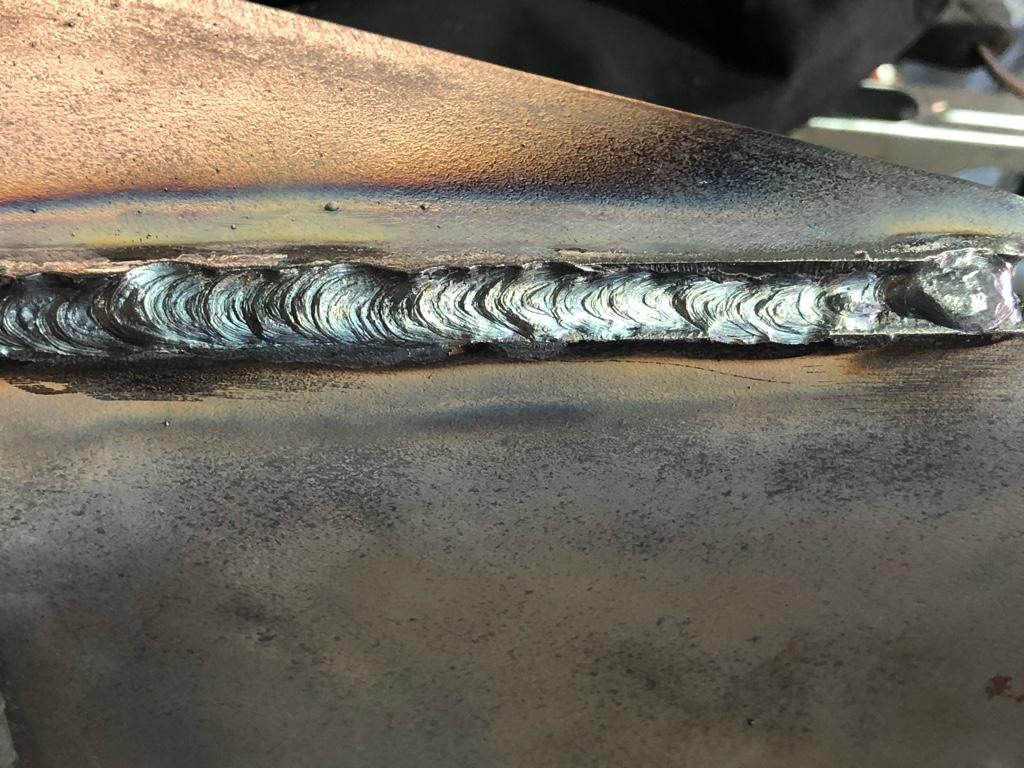Your Complete Handbook to Preventing Weld Undercut Like a Pro
Your Complete Handbook to Preventing Weld Undercut Like a Pro
Blog Article
Mastering the Art of Welding: Just How to Avoid Undercut Welding Issues for Flawless Construction Results
Efficiency and accuracy are vital worldwide of welding, where even the least flaw can jeopardize the structural stability of a made piece. One typical difficulty that welders face is undercutting, a flaw that can lead and deteriorate a weld joint to pricey rework. By understanding the origin of undercut welding and implementing efficient strategies to stop it, welders can elevate their craft to brand-new degrees of excellence (Preventing weld undercut). In the pursuit of perfect construction results, grasping the art of welding to prevent undercut concerns is not simply a skill however a need for those pursuing perfection in their job.
Understanding Undercut Welding

To avoid undercut welding, welders need to guarantee correct welding specifications, such as adjusting the existing, voltage, travel speed, and keeping the appropriate electrode angle. In addition, using the ideal welding technique for the details joint configuration is necessary. Employing weaving movements or backstepping techniques can assist make certain proper weld metal deposition and lower the chance of undercut formation. Normal inspection of welds during and after the welding procedure is additionally important to catch any undercut very early and make needed adjustments to avoid further flaws. Preventing weld undercut. By understanding the reasons for undercut welding and implementing precautionary procedures, welders can achieve top notch, structurally audio welds.
Sources Of Undercut in Welding
Comprehending the aspects that add to undercut in welding is necessary for welders to generate high-grade, structurally audio welds. When the weld metal does not properly load the groove created in between the base metal and the formerly transferred weld metal, undercutting takes place. Numerous aspects can lead to undercut in welding. One usual cause is excessive heat input. Welding at heats for prolonged periods can result in the base steel melting more than wanted, bring about undercut. Inadequate welding incorrect or present welding speed can additionally add to undercut. Not enough current might not provide adequate warm to melt the base and filler steels appropriately, while extreme rate can protect against appropriate fusion, triggering undercut. Additionally, inappropriate electrode angles or wrong torch adjustment methods can develop areas of reduced weld metal deposition, advertising undercut. Comprehending these reasons and carrying out proper welding techniques can aid stop undercutting problems, ensuring solid and long lasting welds.
Techniques to Stop Undercutting

To reduce the danger of damaging in welding, welders can employ tactical welding techniques aimed at boosting the top quality and honesty of the weld joints. Additionally, utilizing the right welding strategy for the details joint arrangement, such as weave or stringer beads, can add to reducing home damaging.
Utilizing back-step welding methods and regulating the weld grain account can also assist distribute heat equally and minimize the danger find out this here of undercut. Regular assessment of the weld joint during and after welding, as well as executing top quality assurance steps, can assist in discovering and addressing damaging issues immediately.
Importance of Proper Welding Parameters
Picking and maintaining suitable welding specifications is essential for accomplishing successful welds with minimal problems. Welding specifications describe variables such as voltage, existing, travel speed, electrode angle, and protecting gas circulation price that directly impact the welding process. These criteria must be meticulously adjusted based on the kind of material being bonded, its thickness, and the welding technique employed.
Proper welding specifications make sure the correct amount of warmth is put on thaw the base steels and filler product evenly. If the specifications are established also high, it can bring about too much warmth input, creating burn-through, spatter, or distortion. On the various other hand, if the criteria are as well low, incomplete combination, absence of infiltration, or damaging may occur.
Quality Control in Welding Operations

Final Thought
To conclude, mastering the art of welding calls for a thorough understanding of undercut Recommended Site welding, its reasons, and methods to prevent it. By ensuring correct welding specifications and implementing top quality guarantee practices, perfect construction outcomes can be accomplished. It is important for welders to consistently make every effort for excellence in their welding procedures to avoid undercut concerns and create high-quality welds.
Undercut welding, an usual flaw in welding processes, happens when the weld metal does not properly fill up the groove and leaves a groove or anxiety along the bonded joint.To prevent undercut welding, welders must make certain proper welding criteria, such as adjusting the existing, voltage, travel rate, and maintaining the proper electrode angle. Inadequate welding existing or incorrect welding speed can additionally contribute to undercut.To minimize the threat of undercutting in welding, welders can use strategic welding methods intended at enhancing the high quality and stability of the weld joints.In conclusion, grasping the art of welding calls for an extensive understanding of undercut welding, its reasons, and techniques to avoid it.
Report this page